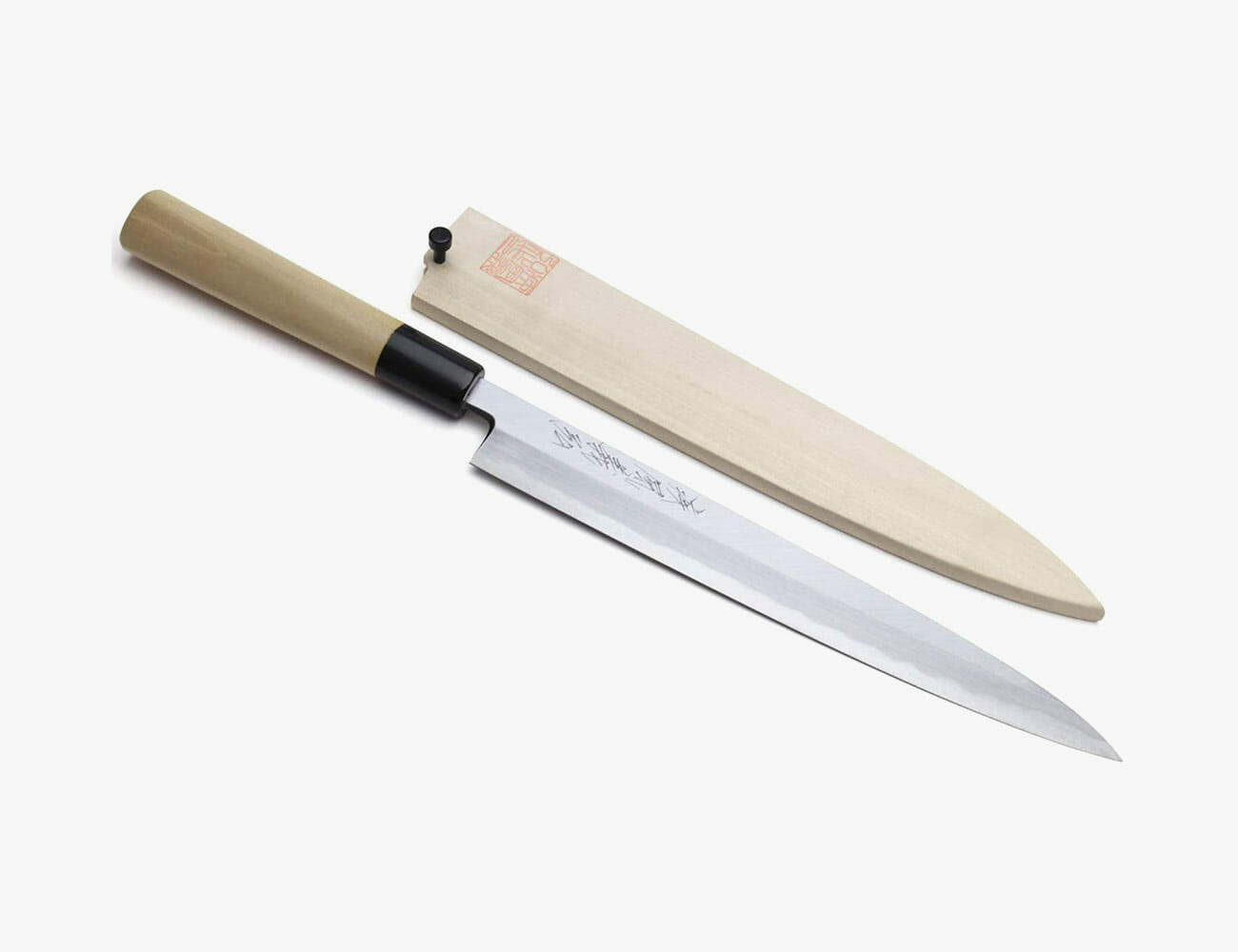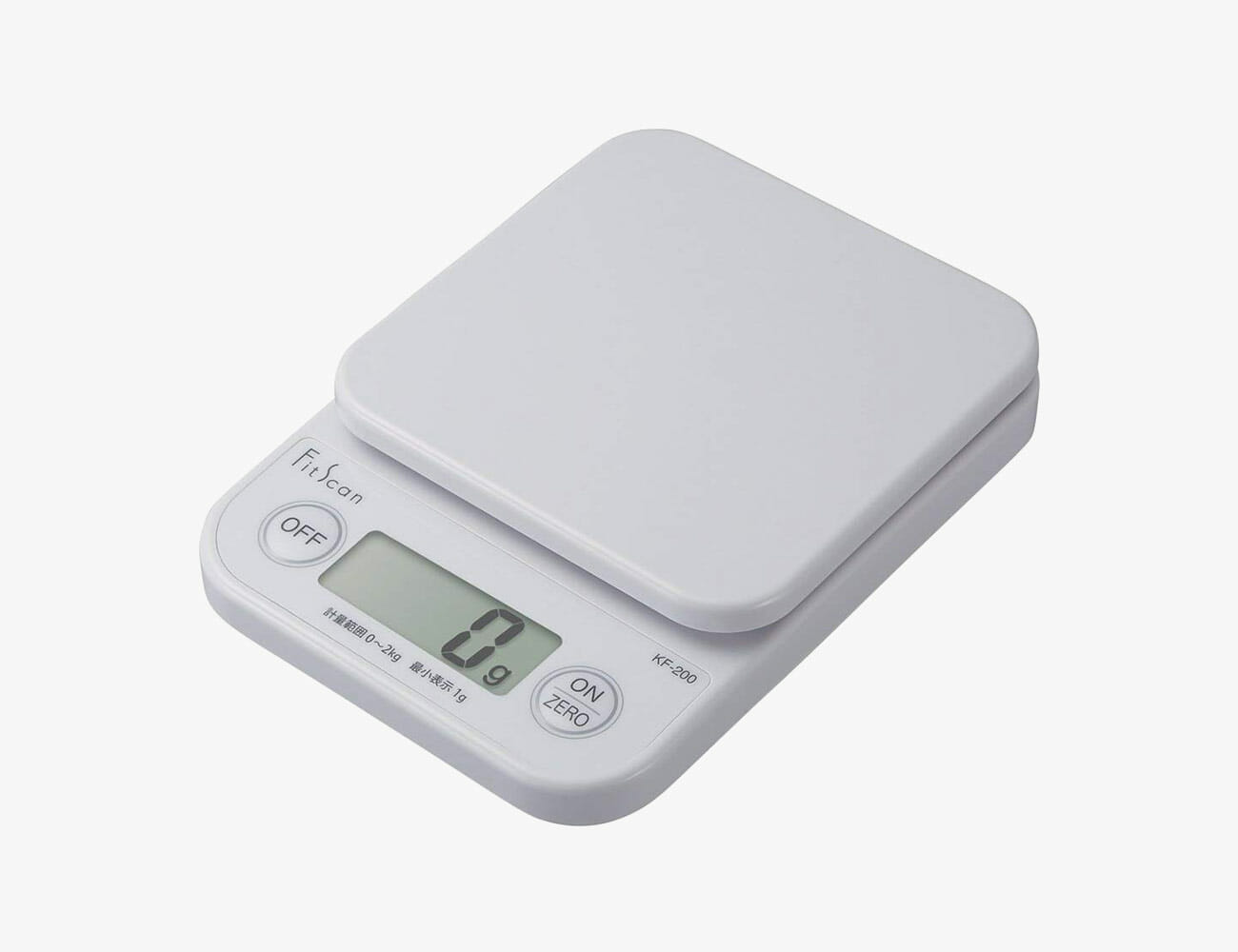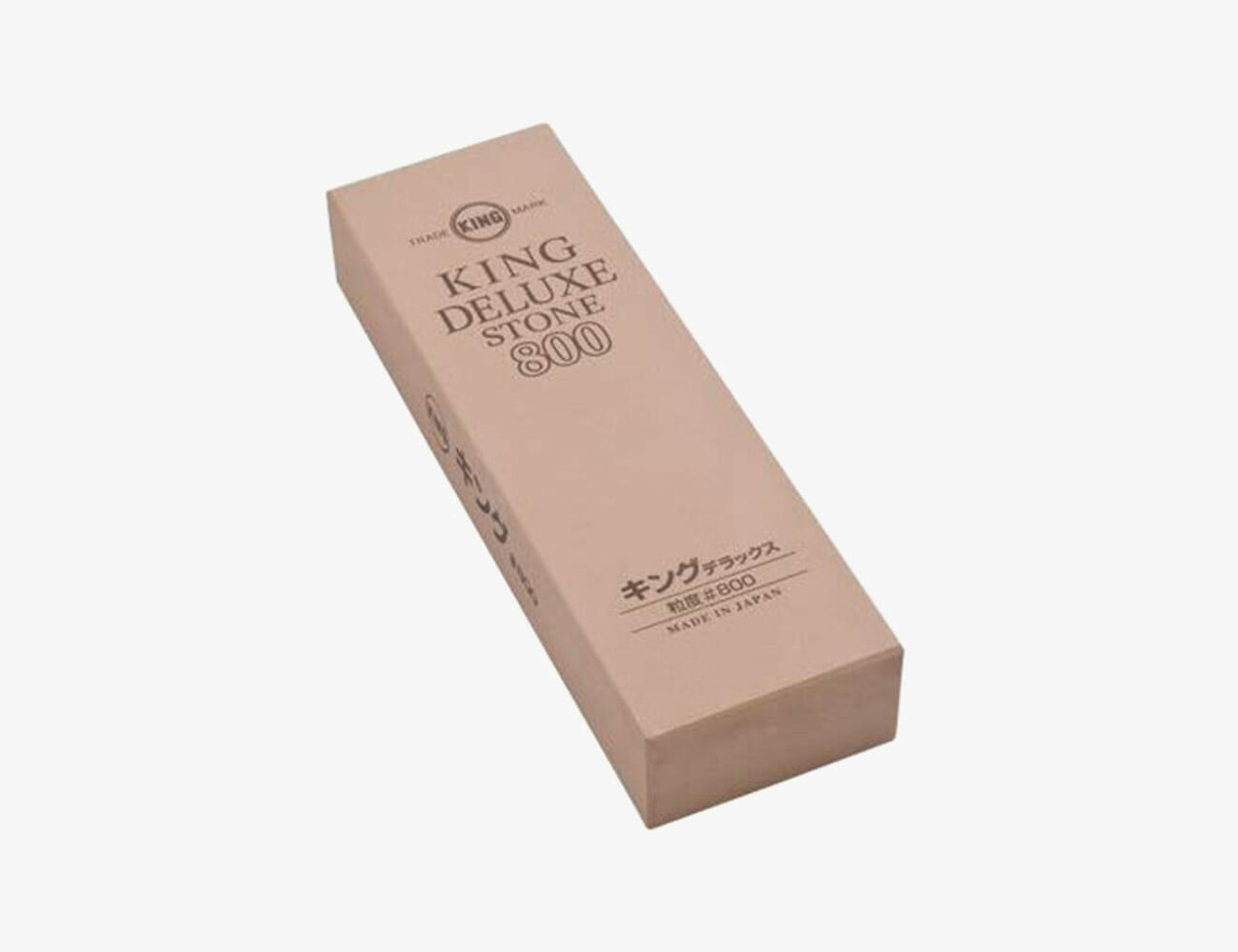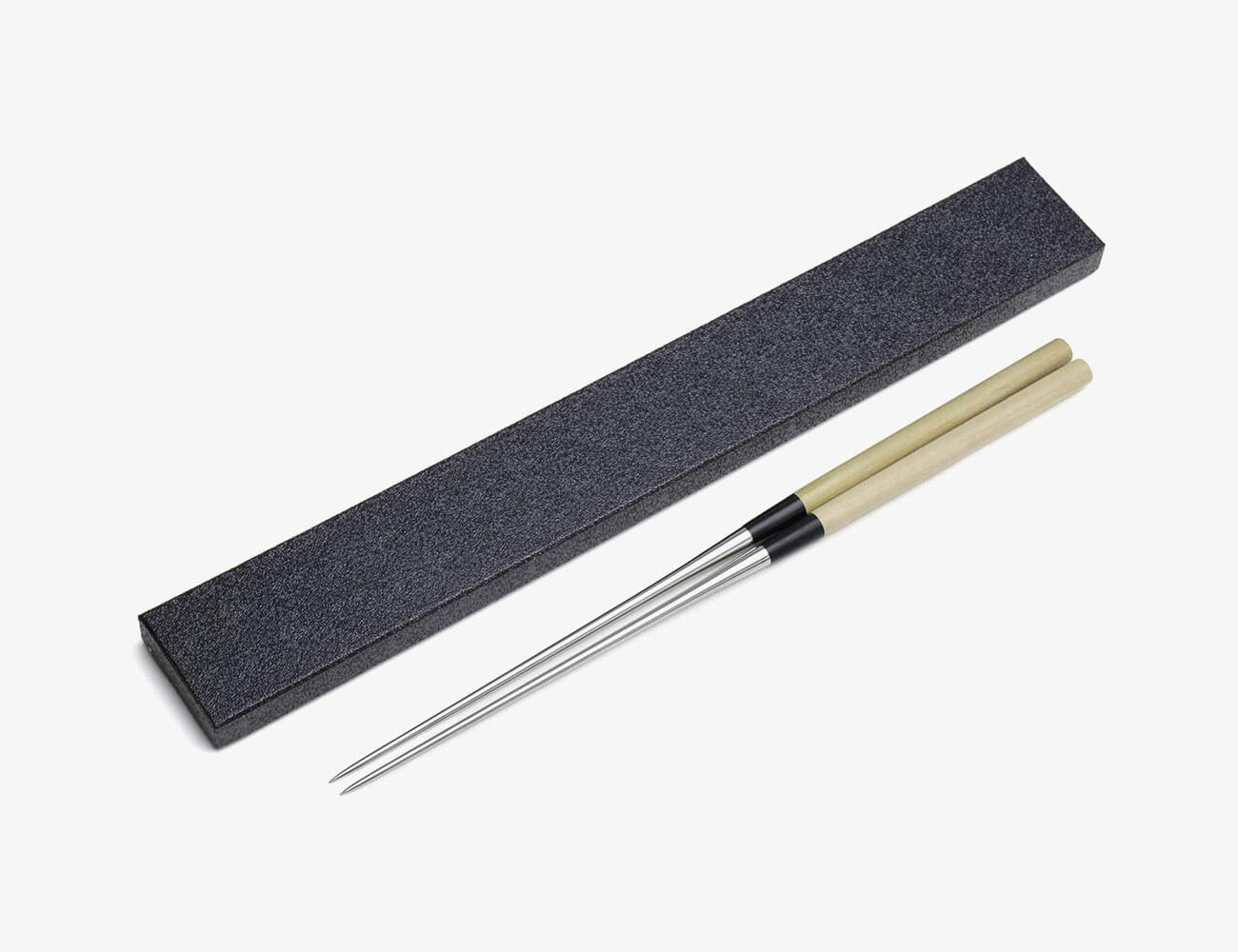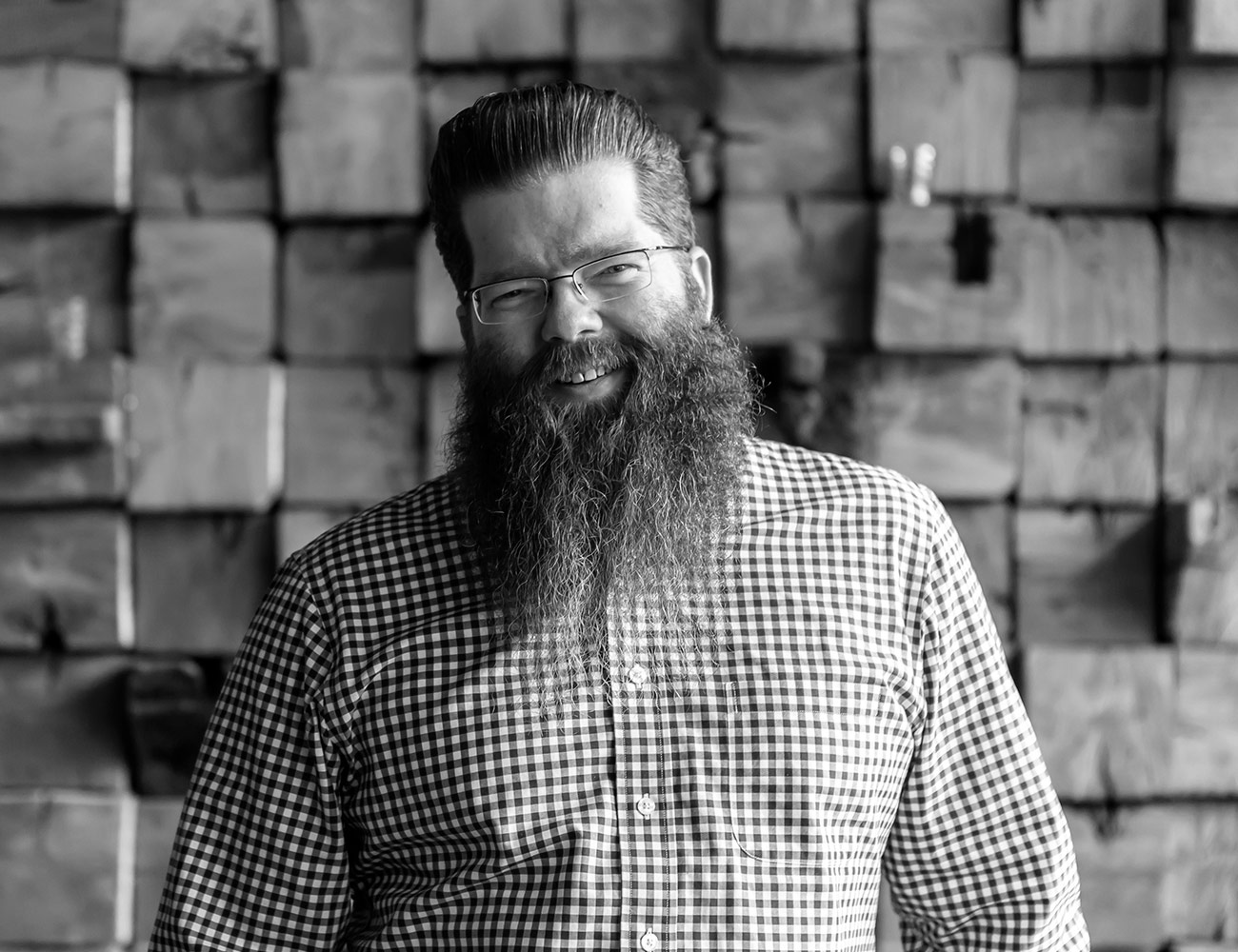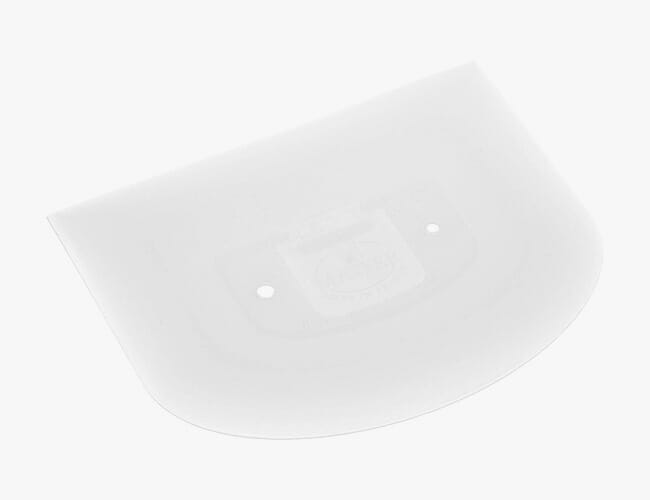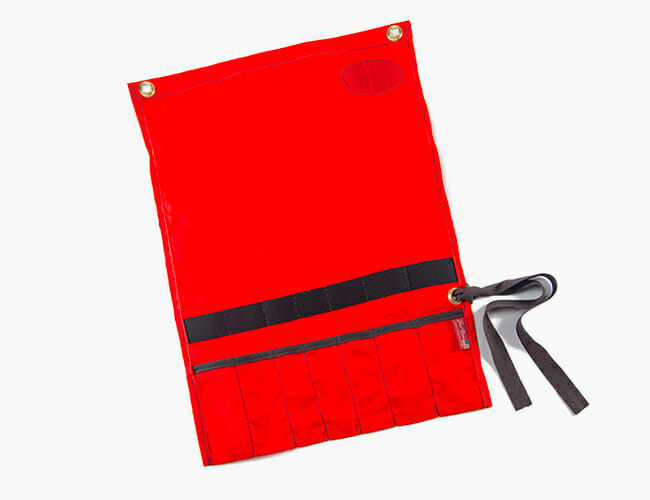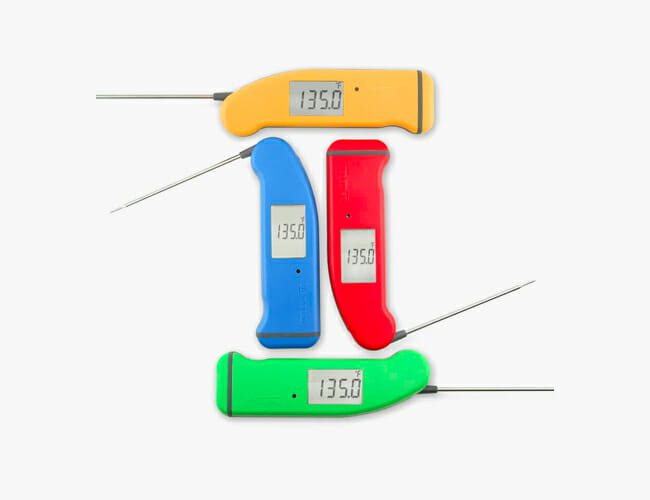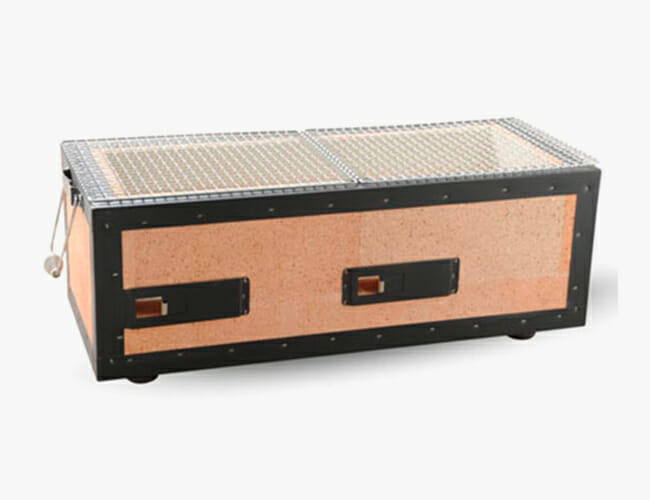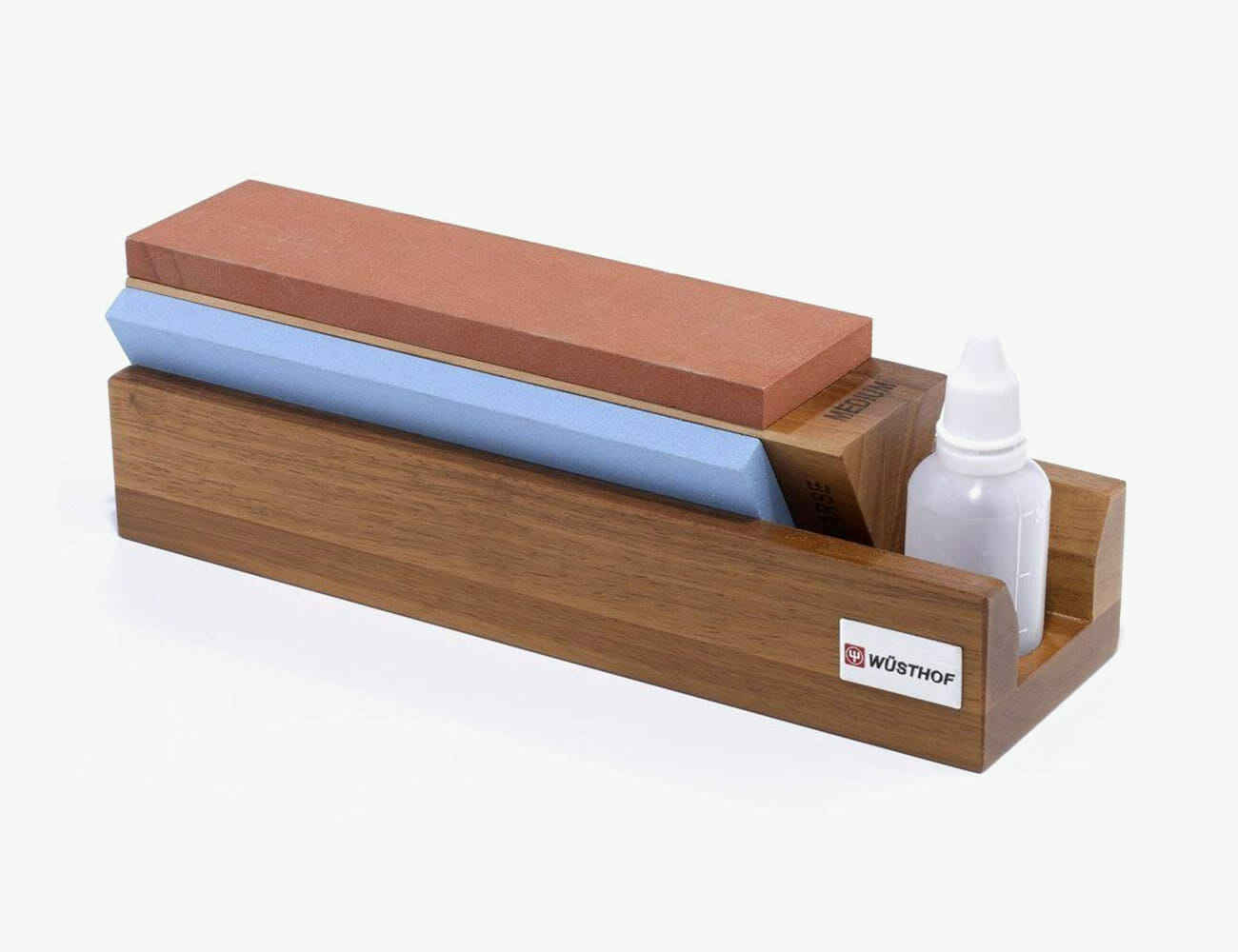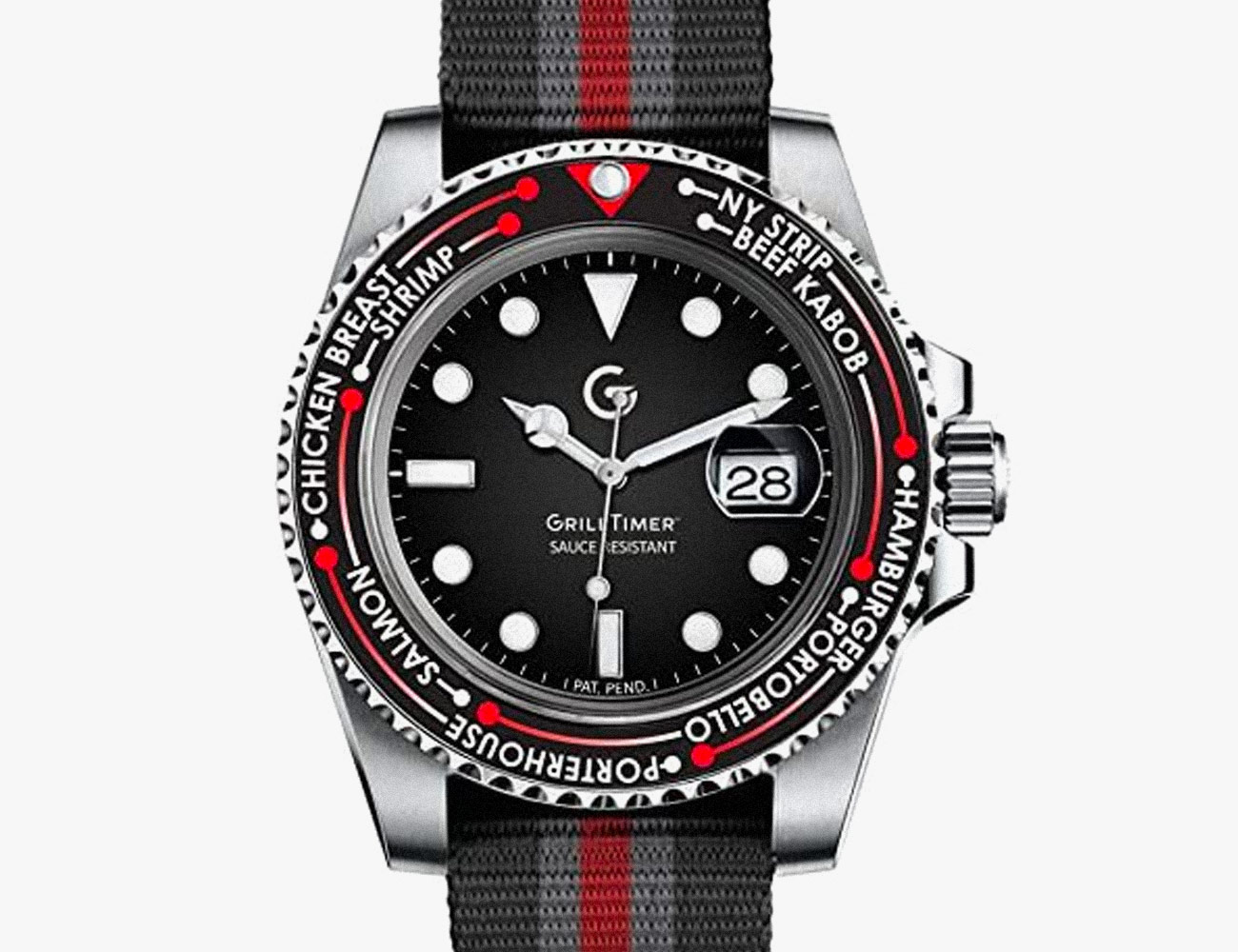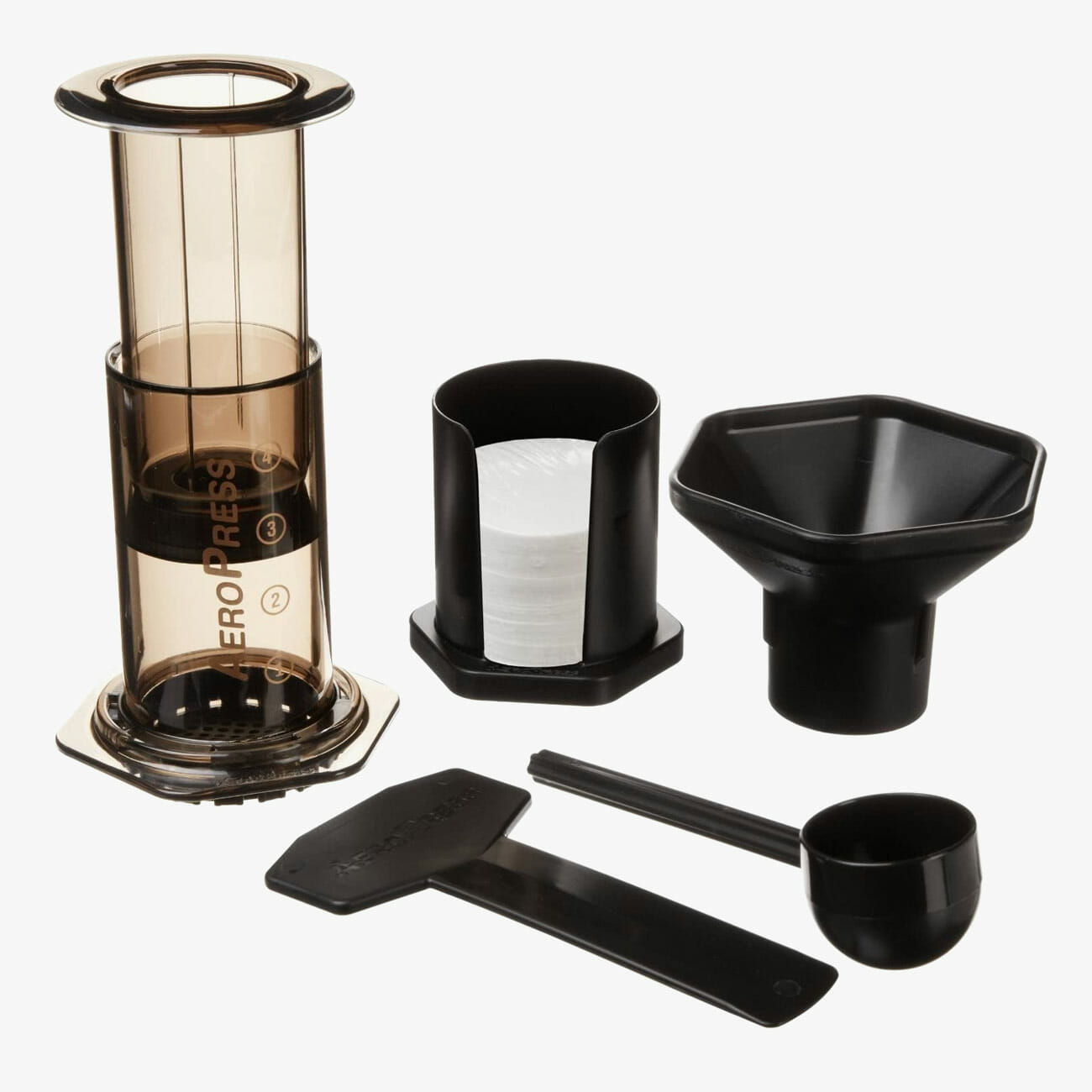There are no gear testers more rigorous than the commercial chef. Can openers, skillets, thermometers, mixing bowls and all manner of other essential gear are put through the ringer night in, night out. So when chefs talk about the gear they couldn’t cook without, we listen. Here are the kitchen tools five pro chefs can’t get enough of.
Chef Gene Kato
Gene Kato, the executive chef of the critically acclaimed Japanese restaurant Momotaro in Chicago, really likes Japanese cooking tools. The James Beard award-nominated chef’s essentials are Japanese in nature and are apt additions to any kitchen of varying cooking styles. From a sashimi knife to a digital cooking scale, here are the essentials Chef Kato can’t live without.
Yanagi Sashimi Knife
“One of the most important things for a Japanese chef is a great sashimi knife. It’s super sharp and a critical tool for cutting and breaking down fish. I use Yanagi.”
Tanita Digital Kitchen Scale
“Last but not least, a scale. Consistency is key to the success of a kitchen. Measuring along the way and balancing the scale before you start to make sure that you’re not including the bowl or vessel is very important. I can’t cook every single dish each night, so the scale helps to make sure that my staff is cooking the dishes exactly as intended, each and every time.”
King Medium Grain Sharpening Stone
“A sharpening stone is a must to get that sharper edge on knives, especially Japanese knives which have flexible, very thin blades, needed for slicing delicate fish. I sharpen my knives once a week and I change the whetstone every two weeks.”
Moribashi Wooden Handle Plating Chopsticks
“I use chopsticks every day at Momotaro — refined chefs in kitchens around the world use tweezers, but chopsticks are the original tweezer. I use them for plating, garnishing and turning items on the robata (it’s a much more delicate tool than cooking tongs).”
Chef Mike DeCamp
After runs cooking in and managing Italian and French restaurants in Chicago, Chef Mike DeCamp returned to his native Minnesota to cook beef and wild game. As kitchen head at Minneapolis’s P.S. Steak, DeCamp aims to modernize the steakhouse without losing classic steakhouse charm (house-aged meats, long wine list and cavernous booths all included). But back in the kitchen, DeCamp is pragmatic. From a $12 Amazon buy to a surprisingly useful Japanese grill, these are the things Chef Mike DeCamp couldn’t live without.
Matfer Bourgeat Nylon Dough Scraper
“This little baby helps me keep my cutting board free of debris. It also helps me transfer anything that I’ve minced up, especially smaller garnishes. Another use is to cut pasta and bread dough into smaller, easier to manager portions. Overall, it’s just very handy.”
Frost River Utensil Roll
“I tend to do a lot of cooking outside of my restaurants. That means that I need to bring the tools that I need to cook with me. This is what I use to transport a few of the things that are the most precious to me. It’s practical but also really durable and I like that it’s Minnesota-made.”
ThermoWorks Thermapen MK4
“This piece of equipment is indispensable for me. I use it so much that I actually keep one in my car at all times as I hop between restaurants. When cooking I prefer to be as accurate as possible and this helps me achieve the consistency that I am looking for in everything that I cook.”
Korin Konro Charcoal Grill
“I use this grill more than I ever thought I would when I bought it. It seemed like a splurge but it’s quickly becoming one of my favorites. It holds heat extremely well, it’s small and most importantly it gets hot. I use Japanese white oak charcoal in it so it lasts forever. I will very rarely reload this during the night of cooking.”
Chef Linton Hopkins

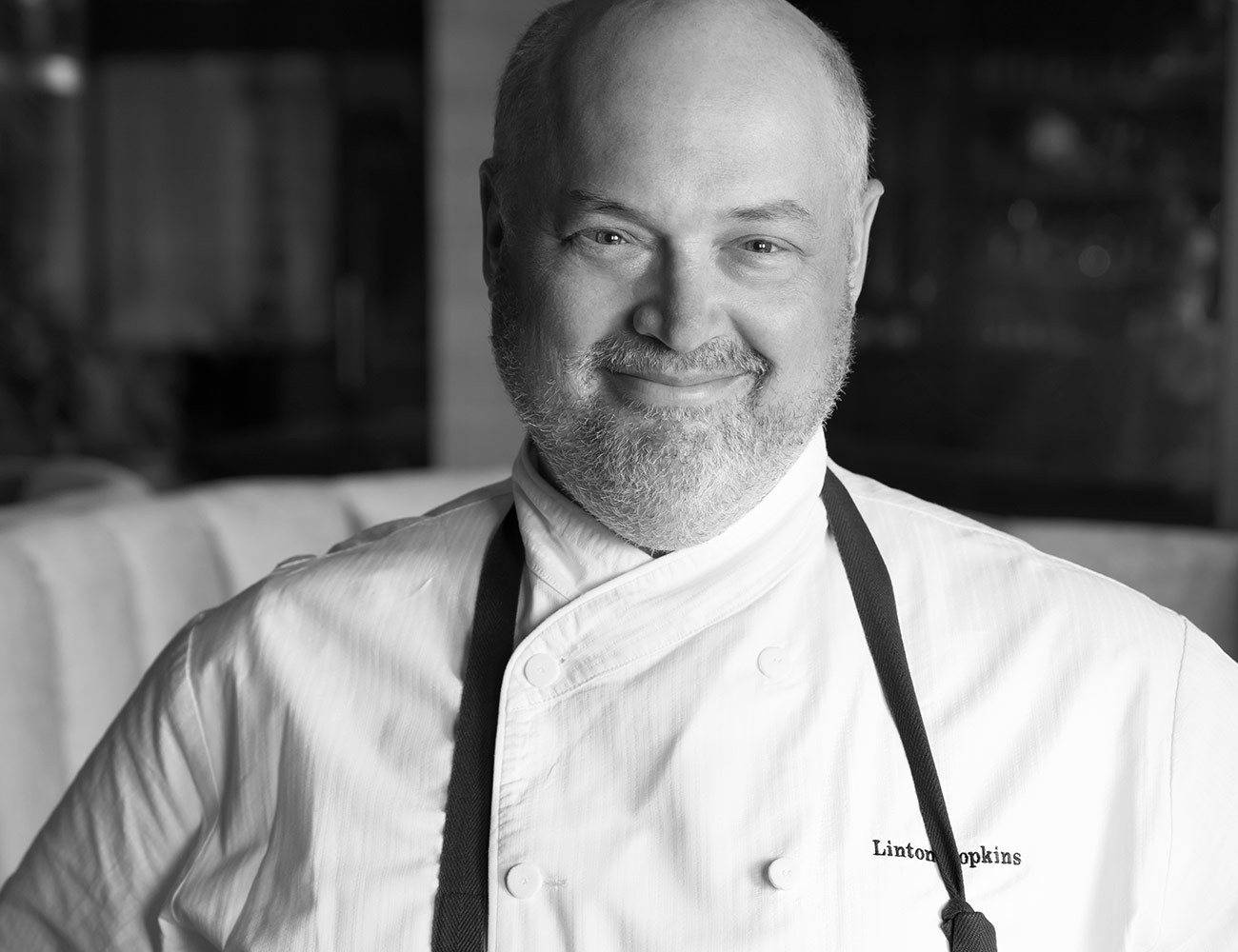
If you’ve been in Atlanta in the last decade, there’s a strong chance Linton Hopkins has fed you. The chef and partner behind Holeman & Finch, Hop’s Chicken, H&F Burger and, most recently, C. Ellet’s has a knack for taking relatable dishes and making them exceptional (H&F’s freakishly hyped burger is the best example). But the James Beard-winning chef’s favorite gear doesn’t follow this line of thinking. From the benefits of a Japanese whetstone to the infinite versatility of a cast-iron skillet, these are the things Chef Linton Hopkins couldn’t live without.
Wüsthof Tri-Stone Whetstone
“The Japanese Whetstone has the ability to sharpen knives, while being meditative. Having sharp knives allow you to get better in touch with the tool which improves your cooking ability.”
Wüsthof 5-Inch Tomato Knife
“I love this specialty knife for cutting tomatoes and other types of fruits. It has the able to smoothly cut through the fiber of the fruit while keeping it intact. Its sharp end points are impeccable for cutting out a core or little imperfections of the fruit.”
Field Cast-Iron Skillet
“The possibilities with a cast iron skillet are infinite: from paella to steaks. On a desert island, this is the one item I would take with me.”
Mauviel Potato Steamer
“This steams perfectly every time, I use it almost daily. In addition to any size potato, there is great diversity with what else you can steam, like broccoli, cauliflower and beets.”
Chefs Macks Collins & Bryan Kidwell
Chef-owners of Los Angeles’ Piccalilli Macks Collins and Bryan Kidwell are fine-dining chefs who don’t really like fine dining. They met at New York City’s fanciful now-closed French-Vietnamese restaurant Rogue et Blanc, became best friends, ran a cult-favorite food truck in LA and opened Piccalilli, which is somewhere in between the two. Their gear, however, is laconic. Of the seven items the tandem recommended, none break the $30 mark. From the most underrated kitchen tool there is to tweezers that look pretentious (but aren’t), these are the things Chefs Bryan Kidwell and Macks Collins couldn’t live without.
Microplane
“This is great for zesting citrus, cinnamon, nutmeg and hard cheese. In fact, it’s one of the most underrated tools in the kitchen. It makes for great visuals on the plate, as well as equal distribution of a garnish on the dish.”
Choice Green-Striped Kitchen Towels
“They’re faster than using pot holders and, overall, just super cheap and easy to clean. Keeping a clean kitchen is super important for both professional chefs and home chefs; keeping it constantly clean with the help of a towel will keep the crumbs, grease, sticky stuff and, most importantly, bugs away.”
Kuhn Rikon Swiss Peeler
“Has an easy grip, is lightweight and is great for professional kitchens; plus, it’s cheap. They’re called speed peelers for a reason; being so lightweight and easy to grip, they enable faster, more efficient even peels.”
Stainless Steel Chef Tweezers
“These are great for all-around cooking in the kitchen. They look pretentious, but once you use them, you will never go back to tongs. A great tool for flipping foods on grills, pans and in the deep fryer, as well as helping incorporate sauces in pastas.”
Fine Chinois Strainer
“This tool is great for smooth purées and for straining very fine foods, stocks and sauces. Fine dining restaurants use them all the time both in front and back of house. Also, finding the perfect ladle to help pass the food through the chinois is a must.”
Silpat Mat
“A nonstick silicon sheet tray liner is great for baking, sweets, tuiles and anything you don’t want to stick. It can withstand high temperatures, is easy to clean and it’s reusable, so you don’t have to use parchment paper.”
Benriner Japanese Mandolin
“This is lightweight and easy to use, great for even slices and with three widths for julienne. It’s super efficient and saves a lot of time. Beginners do need to practice and take it slow because the blade and teeth for the julienne setting are very sharp, especially with a brand new mandolin. Any professional cook would be lying if they said they haven’t cut themselves using one.”



